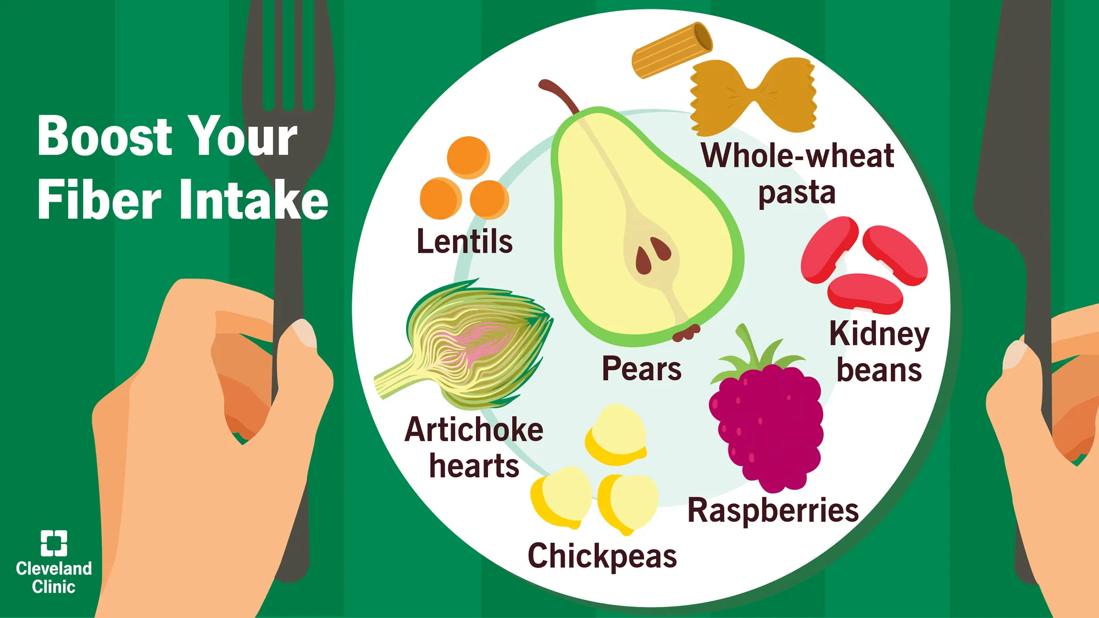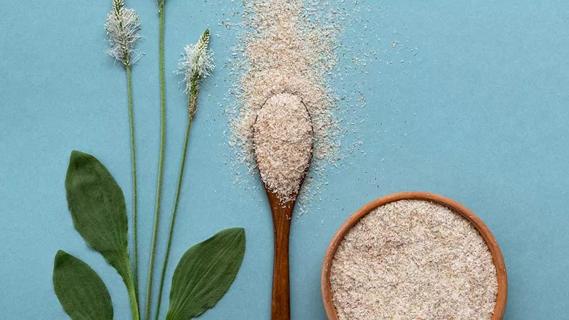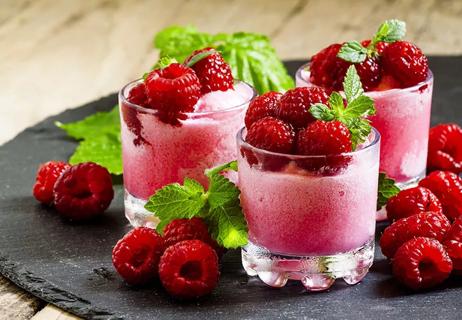From blackberries to barley, healthy high-fiber foods are plentiful

You may not think much about fiber — until you find yourself dealing with an … er, irregular situation.
Advertisement
Cleveland Clinic is a non-profit academic medical center. Advertising on our site helps support our mission. We do not endorse non-Cleveland Clinic products or services. Policy
Indeed, dietary fiber is a magic ingredient that keeps you regular, but thwarting constipation isn’t its only job. Fiber also helps lower cholesterol, reducing the risk of heart disease, and it helps reduce the risk of other diseases like colorectal cancer. Plus, it keeps your blood sugar levels from spiking and makes you feel full longer, which can help you lose weight.
“Fiber does lots of cool stuff in the body,” says registered dietitian Anna Taylor, RD, LD.
Here’s where to get it — and why these foods are best for a high-fiber diet.
Fiber comes from plants, so don’t bother looking for it in your chicken dinner. But the plant kingdom has a lot to offer, and the best sources of dietary fiber might surprise you.
Taylor suggests aiming for 25 grams (g) to 35 g of fiber a day. Here are her top 22 foods to work into your diet right now (along with some tasty recipes and snacks).
Legumes are a great source of fiber. “Lentils are nutritional powerhouses,” Taylor says. “They’re low in fat, high in protein and filled with fiber.” These edible seeds come in various colors, each with its own flavor profile and all of them healthy. They’re a staple in a variety of cuisines.
Amount of fiber: 1 cup, boiled = 18 g fiber
Advertisement
How to eat them: Lentils cook quickly and work well in both soups and salads. Swap them in for some of the meat in your chili to boost the plant-powered goodness, or add curried tomatoes for a simple, savory vegetarian entrée.
Legumes strike again! “Split peas are a good source of soluble fiber, and they’re a low-calorie, fat-free food high in B vitamins and a number of key minerals,” Taylor says. And as a complex carbohydrate, they provide you with energy.
Amount of fiber: 1 cup, boiled = 16 g fiber
How to eat them: They take longer to cook than lentils (about 60 minutes to lentils’ 30 minutes), so Taylor recommends boiling them ahead of time to expedite your dinner prep, or making a split pea soup and freezing the leftovers.
Beans, in general, are fairly high in fiber, and black beans are near the top of the list. They’re high in protein, potassium and antioxidants, too, which makes them a tasty and healthy choice.
Amount of fiber: 1 cup, canned (unsalted) = 15 g fiber
How to eat them: Black beans make for a robust base in a meatless chili, and they’re a surprisingly tasty topper for baked potatoes. You can even bake them into brownies!
Whether whole or mashed, these popular beans are almost as versatile as they are healthy. They’re low in carbohydrates and high in both fiber and protein, plus other vitamins and minerals your body needs.
Amount of fiber: 1 cup, boiled = 15 g fiber
How to eat them: Add them to chili, or enjoy fat-free refried beans as a filling in tacos and burritos. They’re also a fiber-filled addition to charred corn and onion salsa.
These underrated veggies are nutrient-dense with a slightly earthy flavor. They’re packed with fiber, not to mention vitamin K and folate, and they’re also thought to promote liver health.
Amount of fiber: 1 cup, cooked = 14 g fiber
How to eat them: Add artichokes to pasta or salads, like this veggie, bean and artichoke salad, or pile them atop a pizza. And if you love decadent, gooey spinach and artichoke dip, try this lightened-up version.
A note on prepping this spiky veggie: “If dealing with them is too daunting, try the canned or frozen kind,” Taylor suggests. “Just keep an eye on their sodium levels.”
A half cup of hearty kidney beans provides fiber, as well as protein and magnesium. Worried about gas? The solution is actually to eat more beans — or at least, to eat beans more regularly. “After three to four weeks of regular intake, the gut adapts and flatulence levels return to baseline,” Taylor explains.
Amount of fiber: 1 cup, cooked = 12 g fiber
Advertisement
How to eat them: Vegetarian red bean chili uses kidney beans as a base, and they’re a hearty addition to buffalo chicken chili.
Chickpeas are a fiber-filled favorite from the legume list. “Legumes are star players,” Taylor notes. “They’re some of the best sources of protein and fiber, they help keep you full, and they have amazing nutrient composition.”
Amount of fiber: 1 cup, cooked = 12 g fiber
How to eat them: We’ve got one word for you: hummus. But chickpeas are also great in salads and sides, and you can even season them and then roast or air-fry them until they’re crispy for a satisfying snack.
A spoonful of chia seeds can go a long way. Taylor says, “They’re incredibly rich in fiber, contain omega-3 fatty acids and pack a nice protein punch, too.”
Amount of fiber: 2 tablespoons = 10 g fiber
How to eat them: Chia seeds add texture and health benefits to oatmeal, pudding, jam, salads, and even guacamole. And though many people love these their jelly-like texture, you may not be one of them. If that’s the case, try mixing them into a smoothie or yogurt right before you eat it so they don’t have as much time to absorb water and plump up (which is what gives them their gloopiness).
Advertisement
“All berries are good for you, but raspberries are among the highest in fiber,” Taylor explains, “and of course, they’re also delicious.” Raspberries are also full of healthy antioxidants and polyphenols, which decrease oxidative stress and lower your risk of diseases.
Amount of fiber: 1 cup = 8 g fiber
How to eat them: Fresh berries can be expensive when they’re out of season, so frozen ones are often more economical. If you don’t love the mushy texture of thawed berries, blend them into a smoothie or add them to warm oatmeal. And these raspberry cheesecake bars are satisfyingly decadent while remaining low in fat.
Blackberries are juicy and sweet, nature’s own dessert. And like raspberries, these little guys are loaded with antioxidants that help your body fight off oxidative stress and stay healthy. They can also improve your blood sugar levels and help reduce inflammation.
Amount of fiber: 1 cup = 7.5 g fiber
How to eat them: Whole, fresh berries are supremely snackable, but if you’re looking for other ways to incorporate them into your diet, Taylor suggests turning them into a simple sauce. “You can cook them down and put them on waffles or pancakes in place of syrup,” she says.
Advertisement
Carbs sometimes get a bad rap, but whole grains are a great source of fiber. They’re also rich in healthy phytonutrients, which are believed to help prevent various diseases. “Just be sure to skip the white pasta, which has been stripped of all the good stuff, and go for whole wheat instead,” Taylor states.
Amount of fiber: 1 cup, cooked = 7 g fiber
How to eat them: You probably already have some pasta preferences, but if you’re looking for something new, try whole-wheat pasta primavera, which is also loaded with healthy veggies.
“Barley is a delicious grain that’s often overlooked,” Taylor says. A little bit chewy with a nutty flavor, it’s a nutritious whole grain that’s chock-full of essential vitamins and minerals. It’s also very filling, which can help prevent you from overeating.
Amount of fiber: 1 cup, cooked = 6 g fiber
How to eat it: Try barley-based soups like hearty barley soup with kale and parmesan and chicken mushroom barley soup, or mix it into a grain bowl with your favorite meat and veggies. It’s also a healthy, filling with risotto.
These early winter fruits are a fantastic source of fiber. “Compared to many other fruits, pears are particularly high in soluble fiber, which slows digestion and lowers cholesterol,” Taylor says.
Amount of fiber: 1 medium pear = 6 g fiber
How to eat them: Bite right in and enjoy! Or for an elegant, healthy dessert, check out poached pomegranate pears and kumquats.
These nuts are packed with unsaturated fat (that’s the healthy kind), which is thought to reduce your risk of heart disease. In addition to a hearty dose of fiber, they also have about 6 grams of protein per serving — and they’re a great on-the-go snack
Amount of fiber: 23 almonds = 6 g fiber
How to eat it: If you’re eating almonds as a snack, just be sure to pay attention to portion sizes. They add a nice crunch to watermelon salad with cucumber, tomato and almonds and sautéed Swiss chard with slivered almonds.
A classic part of a healthy breakfast, oats pack a one-two punch of fiber, as they’re high in both insoluble and soluble fiber. “They also have a type of soluble fiber called beta-glucan, which may help with blood sugar control by slowing the rate at which your blood absorbs glucose, or sugars,” Taylor explains. “Beta-glucan has also been shown to help reduce total and LDL cholesterol levels.” A half cup of rolled or steel-cut oats provides other important vitamins and minerals, too.
Amount of fiber: 1 cup, cooked = 5 g fiber
How to eat it: Beware instant oatmeal, which is often loaded with sugar. Instead, zap two-minute oatmeal in the microwave, or make your own overnight oats topped with fruit and other healthy additions.
This cruciferous vegetable is high in both soluble and insoluble fiber, along with vitamins C and B9, potassium and more. It’s also thought to lower your risk of certain cancers.
Amount of fiber: 1 cup, chopped = 5 g fiber
How to eat it: Honestly? Add broccoli to just about anything. Roasted broccoli is a standalone star, but it’s also stellar in stir-fry and adds an extra veggie vigor to eggplant parmesan and fried eggs.
This gluten-free, grain-like superfood is high in fiber and is a complete protein, making it an ideal substitute for meat. It’s rich in iron, which supports brain health, and it also contains vitamin B2, which keeps brain and muscle cells healthy.
Amount of fiber: 1 cup, cooked = 5 g fiber
How to eat it: Bake it in sweet potato quinoa muffins, serve it with salmon or add toasted quinoa to salads. You can also mix it with fruit and nuts for breakfast.
Haas avocados are a great source of healthy fats. And unlike most fiber-rich foods, you can use them as a condiment!
Amount of fiber: Half of an avocado = 5 g fiber
How to eat them: “You can spread avocado on sandwiches instead of mayonnaise or put it on toast like a true Millennial,” Taylor says. Guacamole is another delicious way to get your daily fiber, especially when paired with whole-grain crackers or raw veggies.
You know what they say about an apple a day — and it’s kind of true, given the health profile of this fan-favorite fruit. Apples are a good source of pectin, a type of soluble fiber linked to lower cholesterol.
Amount of fiber: 1 medium apple = 4.5 g fiber
How to eat it: Snack on a plain apple, dip it in peanut butter or explore comfy-cozy apple-forward recipes to enjoy in autumn or any time.
These brightly hued legumes may be little, but they bring big nutritional value. These complex carbs are high in antioxidants and vitamins A, K and B6, and they’re considered a healthy source of plant-based protein, with nearly 4 grams of protein per half cup.
Amount of fiber: 1/2 cup, boiled = 4 g fiber
How to eat them: Peas are perfect in stir-fries and salads, and peas with shallots and lemon make for an elegant side dish.
Edamame, or immature soybeans, have a mild flavor, pleasing texture and plenty of fiber. “They’re also one of the few plant sources that contain all the amino acids your body needs,” Taylor notes, “so they’re an especially great choice for vegans and vegetarians.” Find them in the frozen food section, still in the pod or already shelled.
Amount of fiber: 1/2 cup, boiled and shelled = 4 g fiber
How to eat them: Edamame hummus is a tasty take on a classic dip, and steamed edamame is often a big hit for kids to snack on. You can also add shelled edamame to salads and stir-fries.
If you’ve been avoiding Brussels sprouts since you were a kid, they’re worth a second look. This cruciferous veggie is a good source of fiber, and it’s also full of antioxidants like vitamin C and K. Quite simply, Taylor says, “Brussels sprouts are awesome.”
Amount of fiber: 1 cup, cooked = 4 g fiber
How to eat them: Forget boiling this flavorful veggie, and go for roasting or sautéing instead, or shred raw Brussels for a delicious salad. Here are five ways to enjoy Brussels sprouts and reap all of their many health benefits.
Flaxseed is a tiny superfood with huge health benefits. “These fantastic, fiber-rich seeds are full of protein and phytonutrients,” Taylor says.
Amount of fiber: 1 tablespoon = 2 g fiber
How to eat it: Sprinkle flaxseed on yogurt, cottage cheese or oatmeal, or add a spoonful to your salad, soup, smoothie or sauce.
High-fiber snacks
Looking for high-fiber snacks you can grab between meals? In addition to any of the foods listed above, reach for:
Can you get enough fiber from food alone?
“You certainly can get enough fiber from the foods you eat,” Taylor reassures, “but data shows that most Americans don’t.”
The U.S. Department of Agriculture’s 2020-2025 Dietary Guidelines for Americans calls fiber “a dietary component of public health concern” and reports that more than 90% of women and 97% of men don’t get enough fiber.
“When you don’t get enough fiber, you may start to experience constipation and other tummy troubles, in addition to an increased risk of developing heart disease, Type 2 diabetes and colon cancer,” she warns.
It’s best to get your fiber from food, but your healthcare provider may recommend fiber supplements if you can’t seem to get enough of it in your diet.
What to know before eating more fiber
Before you jump on the fiber bandwagon, a word of caution: “Be sure to add more fiber to your diet slowly. If your body isn’t used to it, eating too much can cause bloating and cramping,” Taylor says.
To avoid that inflated feeling, gradually increase your consumption of high-fiber foods over the course of a few weeks.
One more important tip: “When adding fiber to your diet, be sure to drink enough water,” Taylor adds. “Fiber pulls in water, which is good, but if you aren’t hydrated enough, it can cause constipation.” To keep things moving, drink at least 2 liters of fluids each day.
If you increase your fiber slowly and steadily, as well as drink lots of fluids, your body will be better able to adjust.
Learn more about our editorial process.
Advertisement

This carbohydrate helps you avoid constipation, stabilize blood sugar, lower cholesterol and stay fuller longer

Most adults aren’t getting enough of the essential nutrient

Choose foods that are easily broken down in your digestive system, like fruits and vegetables without skins or seeds

This spiny sea veggie may help your heart, gut, immune system and more

The fiber supplement can help ease constipation, manage diabetes and lower LDL cholesterol

In a world of confusing choices, your healthcare provider can be your best resource

10 delicious dishes with 10+ grams of fiber per serving

This prebiotic is found in a lot of foods that you probably already eat

Start having sex about 72 hours before ovulation, then at least every other day during your fertile window

Attachment theory suggests that your earliest relationships shape connections throughout your life

It isn’t a recognized mental health disorder, but research shows that problematic social media use can negatively affect your mental health, self-esteem and sleep